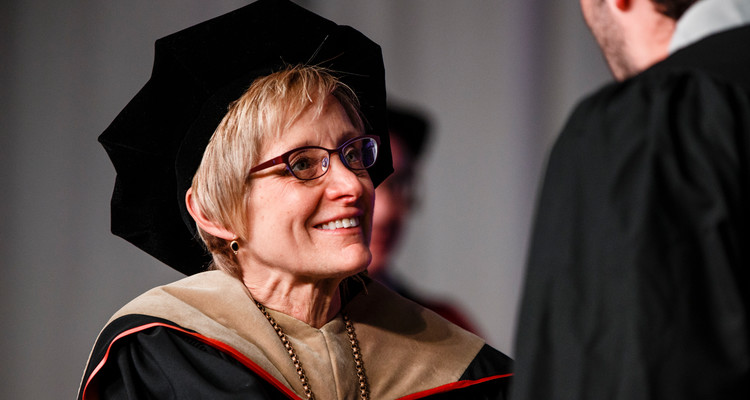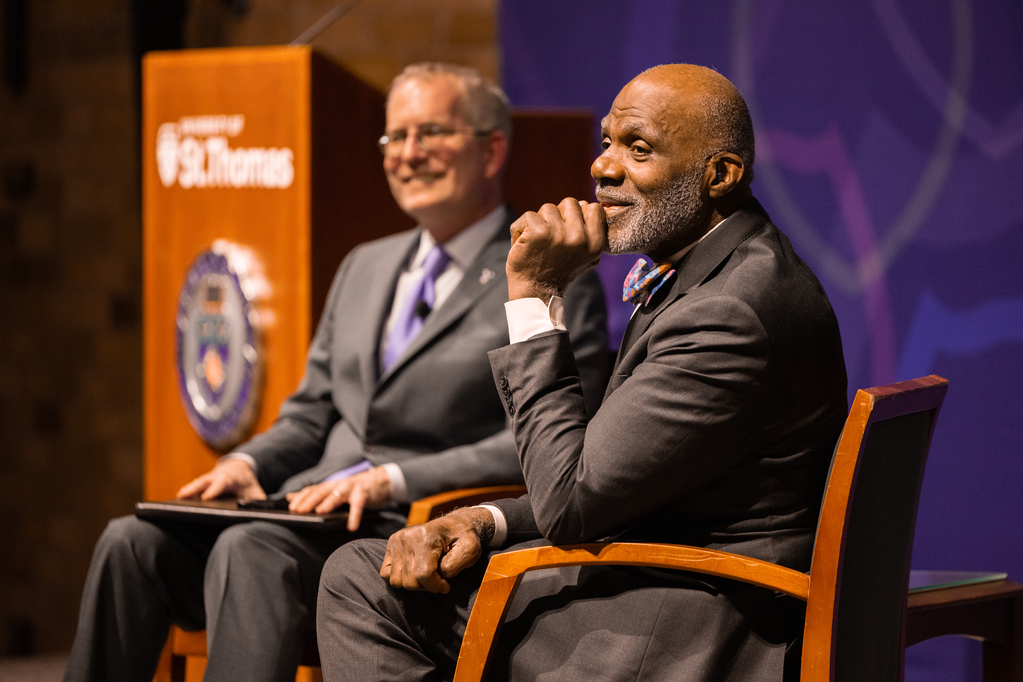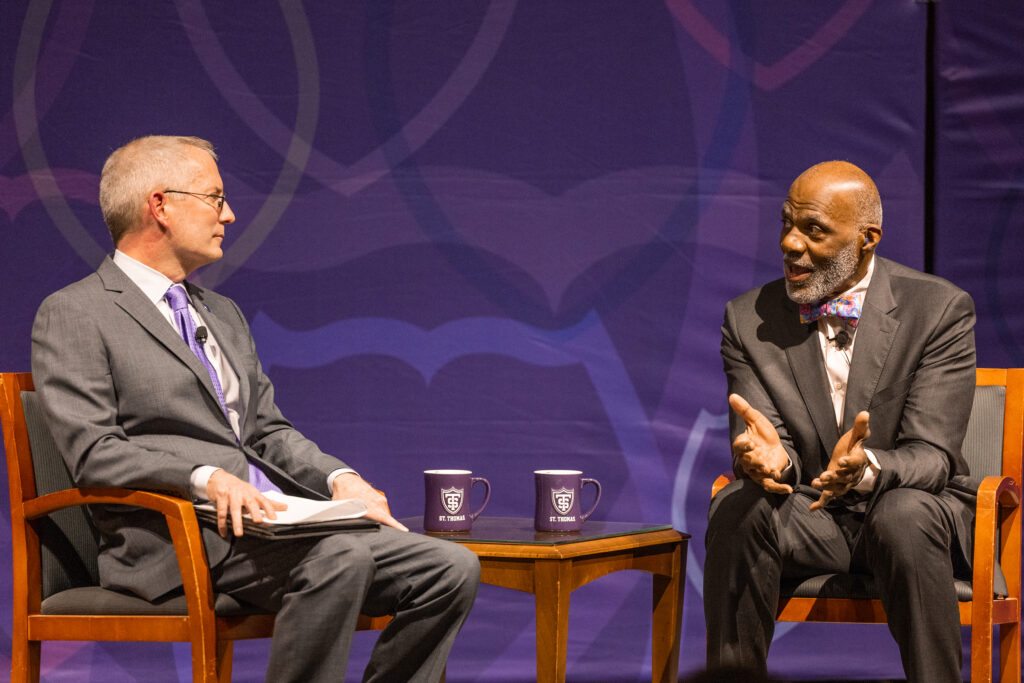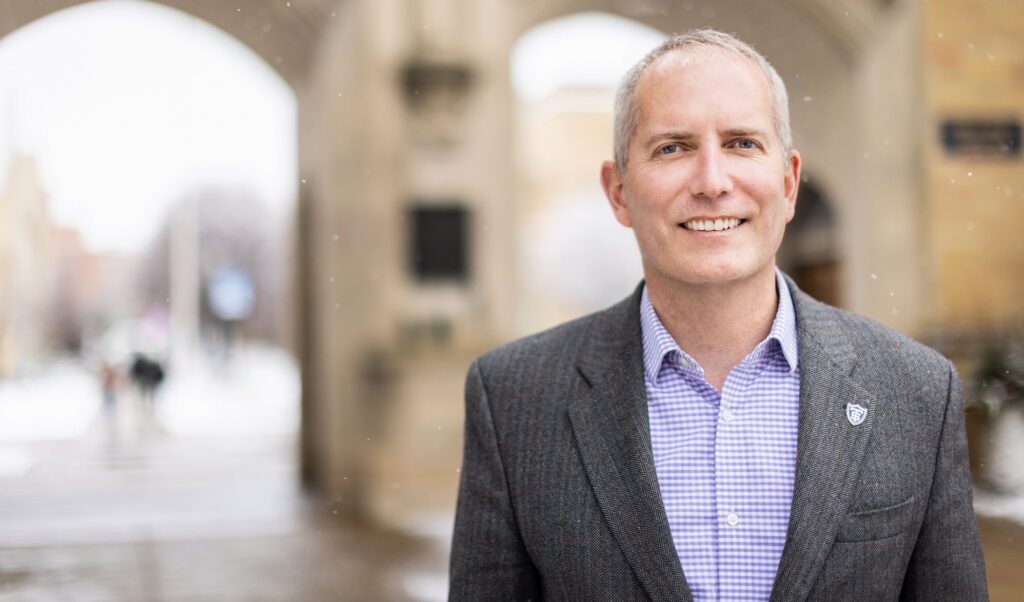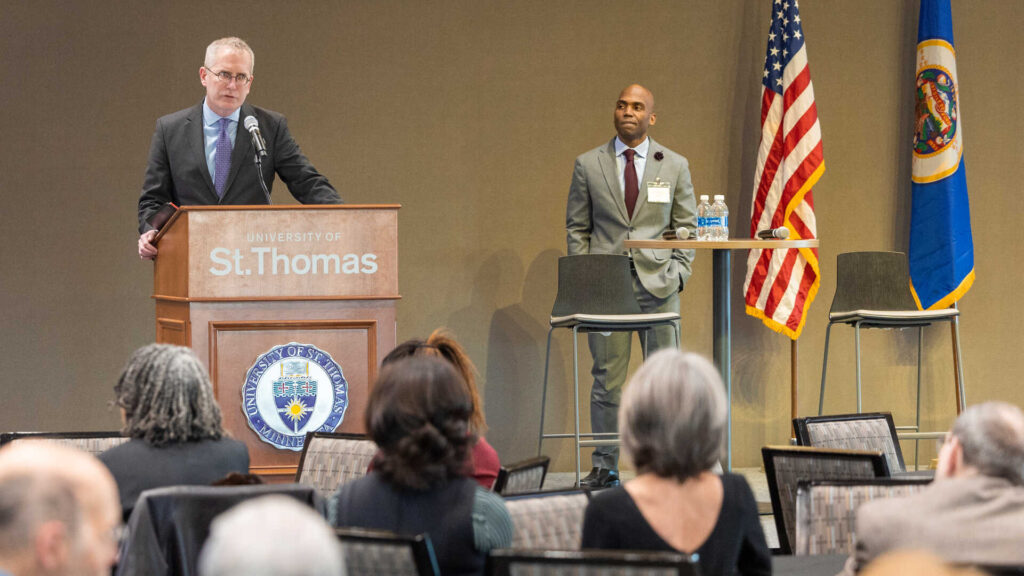Defining a Catholic University
What is a Catholic University?
Is it Catholic first? Is Catholic a noun and university a modifier or adjective?
Is it university first? Is university a noun and Catholic a modifier or adjective?
Or is Catholic University an integrated phrase? Is Catholic University a noun in and of itself, with no modifiers?
Our founder, Archbishop Ireland, was ahead of his time. He put university on an equal footing with Catholic. Most Catholic Universities prior to the mid-60s and Vatican II stressed Catholic more than university. In 1967, just two years after Vatican II, a group of presidents of American Catholic universities, led by Fr. Ted Hesburgh of Notre Dame, wrote the Land O’ Lakes document. It was developed in response to a call by the International Federation of Catholic Universities for input to the global discussion on the nature and role of the Catholic University in the modern world.
Some say, fifty years ago, Land O’ Lakes moved the pre-Vatican II emphasis on Catholic first to university first, and Ex Corde swung the pendulum back in 1990 to Catholic first.
I believe Land O’ Lakes is more accurately characterized as imagining a Catholic University as an integrated phrase, a noun in and of itself, with no modifiers. The Land O’ Lakes architects described a bold vision for a Catholic University and, like John Ireland, were pioneers in doing so.
Land O’ Lakes stipulated the need for Catholic Universities to be among the most respected universities in our country for their teaching and research. It advocated for free inquiry, academic freedom and institutional autonomy from the Church, which was necessary for universities to make independent decisions.
While expressing the importance of academic excellence in a Catholic University, Land O’ Lakes also illuminated in several ways the importance of a Catholic presence in a Catholic University. First, it explicitly integrated the academic and Catholic missions of a Catholic University. It highlighted the roles of theology and interdisciplinary encounters as defining elements of a Catholic University. Theology scholars were called upon to be in dialogue with all other disciplines, and to examine and evaluate all aspects of the Church and provide the Church with continued counsel.
Second, Land O’Lakes said a Catholic University should give preference in its teaching, research and public service to questions of human urgency and named the following examples: civil rights, international development and peace, and poverty, all of which remain issues of human urgency today.
Thirdly, the Land O’ Lakes authors described a Catholic University’s social community as one where students express their Christianity in a variety of ways and live it experientially and experimentally, and where faculty and students explore together new forms of Christian living, witness and service.
Finally, the authors also believed their universities should welcome people of all faiths and embrace the possibility that God can be encountered in unexpected places. They believed all people share responsibility for human history and thus need a foundation of respectful dialogue and understanding from which to pursue this shared responsibility.
Dangerous divides
We remain on the journey of clarifying the integrated term Catholic University 50 years later.
Why is this so hard? Why have we been discussing, and sometimes debating, for 50 years what it means to be a Catholic University?
There are several reasons, some involving the hierarchical nature of the Church, but I would like to focus on another reason that involves all of us.
There is a well-documented human tendency to “sort” ourselves and our views or affiliations into clear dichotomies. This human tendency has been magnified of late in our country. Increasingly we view ourselves as either this or that (liberal or conservative, republican or democrat, black (brown) or white, urban or rural, coast or heartland, rich or poor, educated or uneducated, Christian or non-Christian). And we limit both our in-person and online encounters to interactions with those who live, think and believe like we do, and thus those who reinforce our own worldviews. I am sure many of you have read or heard about the book, The Big Sort, which describes how America came to be a country of cultural division, economic separation and political polarization over the past 40 years.
As a result of this polarized segregation and isolation, we are losing our ability to meaningfully discuss our similarities and differences with respect, compassion and sensitivity.
Recently, there have been articles and discussions in high profile media outlets about a similar polarization in the American Catholic Church between “liberal and conservative Catholics” or between Catholics who focus on “sexual ethics” and those who focus on “social justice.”
I believe there are many parallels to these dichotomies in our Church and our nation and our unresolved struggle, which began with Land O’ Lakes, to move away from the ongoing debate of whether it is Catholic first or university first and to focus on defining and living the integrated term Catholic University.
As Catholic universities, if we can bridge the gulf and encompass all (Catholic and university), maybe we can be a role model for bridging other divisions in our Church and our country.
Bridging the divide between those who stress Catholic and those who stress university within our own communities doesn’t mean we all move to the middle. It means we resist segregating ourselves in our “camps” within our own universities and we authentically encounter, communicate with and learn from each other with love and respect.
A modern Catholic University
What would this Catholic University look like today?
The foundational principle of the Catholic University is respect for and promotion of the dignity of all human persons. All human persons are created by God and thus are sacred. A Catholic University is devoted to integral human development. We are concerned with the intellectual, moral and spiritual development of all persons.
The Catholic University includes Catholics and non-Catholics.
Some members of the Catholic University will be pursuing their spiritual development by focusing on the orthodoxy of their faith, others by focusing on the personal commitment or piety of their faith, and others by focusing on the social mission of their faith.
The Catholic University welcomes the inclusion of ideas, thoughts and differences. We do not exclude issues of modern society and culture. We do not exclude doctrinal or non-doctrinal, orthodox or unorthodox argument and thought.
There are related lessons to be learned from the historical and current free speech debates on American campuses. In the 1960s, University of California, Berkeley Chancellor Clark Kerr explained his decision to allow controversial speakers on campus by saying, “The University is not engaged in making ideas safe for students. It is engaged in making students safe for ideas.”
Encountering those with ideas or faith perspectives counter to our own is an important step in fully shaping and strengthening our own convictions.
What would be nonexistent in this Catholic University today?
Dichotomy and separation. Hatred and discrimination. Any group’s claim to superiority. Such notions violate the fundamental principle that we are all the same in the eyes of God.
In light of recent events in Charlottesville and elsewhere in our country, the U.S. Conference of Catholic Bishops explicitly reiterated the Church’s stand against the sins of racism, white supremacy, and neo-Nazism. They also announced a new Bishop’s task force to address racism in our country and in the Catholic Church. Clearly, we must stand against these same sins in a Catholic University.
Inclusivity, community and One University
In conclusion, a Catholic University is called to be a community of inclusion, encounter, and accompaniment. Members of a Catholic University are called to see the other person as God sees him or her, rather than through our own sometimes limited lens. This is our calling and our opportunity.
If we can bridge the chasm between those who prefer to stress Catholic and those who prefer to stress university, as a Catholic University we also may be able to serve as a role model for bridging the chasm in the American Catholic Church and the many other chasms in our country today.
As leaders of Catholic Universities we stand in the middle, regardless of our personal beliefs. We stand in the middle making room for all, doing everything we can to break down the walls and chasms separating our community members, and creating a sense of “us” - something at St. Thomas, we refer to as One University.
